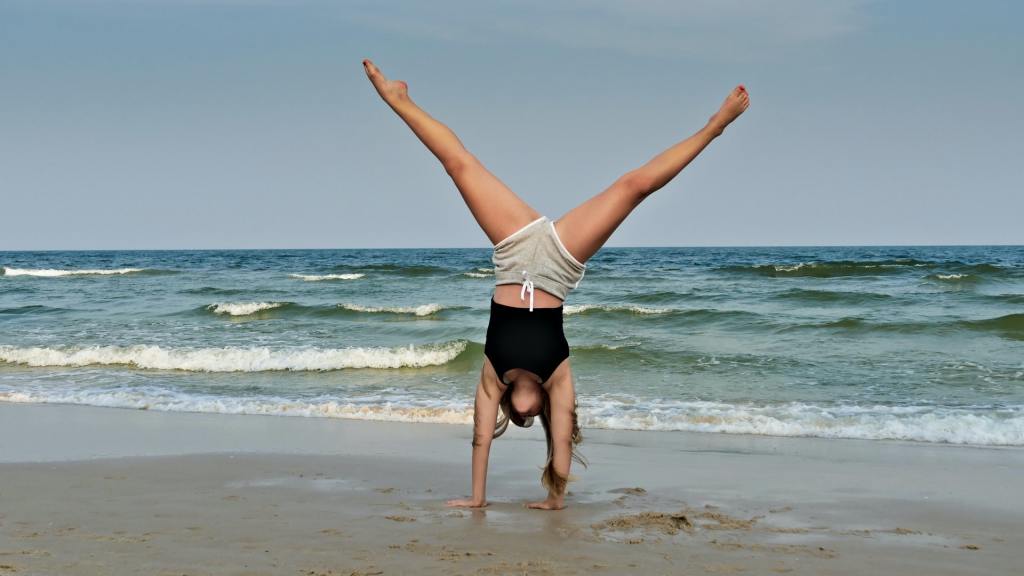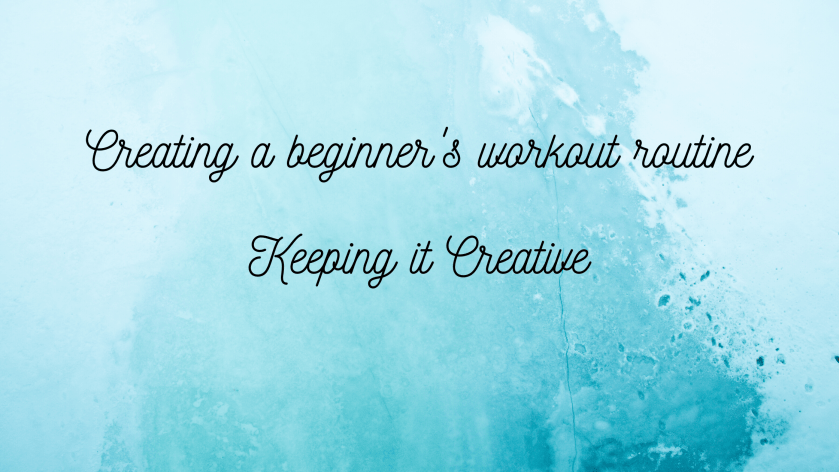
If you read my post on my bullet journal set up for next month, you will have seen that I intend to start track my steps and workouts in a handy spread I created for the purpose. As this will start from tomorrow (can you believe it’s almost May already!), I thought I would do some research into creating a good workout routine that targets all of the body and includes all of the necessary elements to increase strength and fitness. And if I’m going to do all of this hard work reading up on creating a rounded routine I figured I should share it with you all in case you are wanting to improve your fitness levels too. Bear in mind this will be very much beginner level and also that I’m over 40 and therefore I have to take into account a little bit of bodily wear and tear! So, without further ado, I’ll jump right into it.
My first port of call was the NHS website as I figured that this was the most reliable source of information I could find. They present guidelines for all adults aged 19 to 64 and state the following
Adults should do some type of physical activity every day. Any type of activity is good for you. The more you do the better.
NHS Guidelines for 19 – 64 year olds
The NHS then goes on to state that the exercise should consist of strengthening exercises which work all of the major muscles (legs, hips, back, abdomen, chest shoulders and arms) at least twice a week plus at least 150 minutes of moderate intense activity or vigorous intensity activity for 75 minutes. Some examples of each intensity can be found below:
Moderate activity
a brisk walk
heavy cleaning (vacuuming, mopping etc)
mowing the lawn
cycling (light effort)
doubles tennis
water aerobics
dancing
swimming
gentle aerobics
Vigorous activity
hiking
jogging
tennis singles
fast bike riding
football game
basketball
running
energetic dancing e.g. Zumba, Clubbercise
This means that, for example, you could aim for 30 minutes of moderate activity 5 days a week or an intense exercise at least once a week plus shorter moderate activities. For my moderate intensity activity, I try to do a brisk(ish) walk almost every day and a beginners aerobics class for 30 minutes at least 3 times a week which starts of gentle and then gets a little more vigorous further in.
The website also says that we should reduce the amount of time spent sitting or lying down and break up long periods of not moving with some activity. This is where a Fitbit fitness tracker is useful because you can set it up to vibrate if you haven’t done 250 steps in the hour to remind you to move (it even tells you how many more steps you need sometimes!). In fact, at 10.50am as I sit here typing, my Alta HR has just vibrated so I paused and went for a short walk around the garden and popped up the stairs to deliver this morning’s post to my husband in my craft room. I also use the opportunity to do a few basic stretches, particularly of my neck.
If, like me, you are a beginner or are just getting back into a fitness routine, you should remember to take it gently at first, so no doing long, vigorous workouts and collapsing in a heap at the end! I found that when I started doing the aerobics sessions it was tempting to push myself too far in a bid to see faster results but this is certainly not to be recommended. Far better to push yourself a tiny bit harder each day and build up to more intense routines.
You can also find a list of very intense activities which are known as High Intensity Interval Training (HIIT). These are done in short bursts where you put in maximum effort followed by periods of rest. Just thinking about that has made me feel exhausted (ha ha!) and reminds me of when I once went to a spinning class and could barely drag my jelly legs off the stationary bike by the end!
For muscle strengthening, exercises such as yoga, pilates or Tai Chi are recommended but you could also try some heavy gardening such as digging when the weather allows. Lifting weights or using resistance bands are also good for developing muscle. Personally, as you will know if you follow my blog, I’m really getting into yoga and try to do at least 20 minutes per day. It may look easy with it being so slow but some of the poses can be really intense. There are so many benefits for body and mind with yoga and if you want to learn more, check out this post. I’ve even found some yoga routines online which target specific parts of the body so you can work on strengthening your back, upper body and even your core. This is one of my favourite YouTube channels right now.
Muscle strengthening
You can combine your moderate aerobic activity with your muscle strengthening routines or do them at different times or on different days depending on what suits you. I do my yoga and a walk in the morning and then do my aerobics in the afternoon but I’m finding that the bright afternoon sun is making my living room really hot so I may change this as the weather improves. After lockdown is over, I’m also hoping to do my hour long yoga session on a Friday at the wellbeing centre and also go to the gym for resistance work and some time on the treadmill, the bikes or stepper.
Remember to exercise safely
When you first start, it’s really important to ensure you are performing exercises correctly. That’s why I would recommend that you go to a class or seek the help and support of a fitness professional. I know, at the moment, due to lockdown and social distancing, doing this in person is not currently possible but there is advice to be found online on various websites and a whole array of YouTube videos from instructors. If your technique is poor, you won’t get the expected benefits of an exercise and it may even lead to pain or injury so please do make sure you workout safely.
Schedule in rest days
When you begin a new exercise regime and develop the motivation to stick to it, you can quickly become addicted to the rush of feel good endorphins that are released during moderate activity workouts. Also, when you start to see results in terms of better muscle tone and strength or weight loss, you may think that working out intensely every day is going to help speed up your progress. However, the opposite is in fact true. Taking regular breaks in the form of rest days is just as important as exercise as it allows your body to recover and repair. In fact, skipping rest days often leads to burnout or injury.
A rest day doesn’t mean you can’t do any exercise at all. It just means that you take it easy and avoid doing anything intense. A little light stretching or a gentle walk are absolutely fine. So, for example, I shall still be doing my yoga and getting outside for a nature walk each day but I won’t be doing my aerobics on at least two of the seven days. By building in rest time I’ll be feeling refreshed and ready to continue with the rest of my routine.
I hope you have found today’s post helpful. I’ve tried to put the key ideas in bold so that you could skim read if necessary. Let me know if this lockdown period has provided the encouragement for you to get fit or if you really need to up your activity levels but haven’t found the motivation to get started yet! (I know some people are struggling with fatigue right now due to the fact the situation is quite overwhelming and stressful). If you have any further ideas or advice for me in my journey to fitness, please feel free to share your suggestions.



This is a great post! So many people get started with fitness thinking they have to go hard everyday. Rest is important too!
LikeLiked by 2 people
Thanks for reading and commenting. I’m certainly going to be incorporating more rest into my routine as I overdid it when I first started!
LikeLiked by 1 person